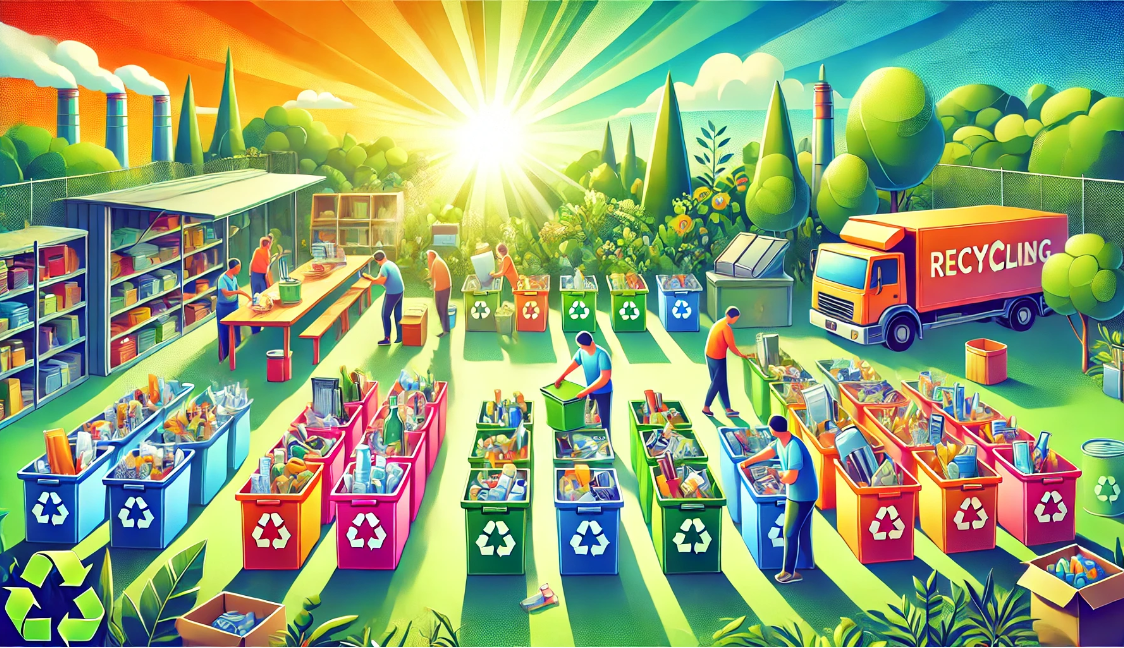
Recycling Unwanted Items: Your Complete Guide to Responsible Disposal
We all have items around the house that we no longer need—old furniture, electronics, and even outdated clothes. While tossing them in the trash might seem like the easiest solution, most of these items can actually be recycled or repurposed. Recycling unwanted items is not only better for the environment but can also help others in need when items are donated. In this guide, we’ll cover practical tips and specific steps for recycling everything from old appliances to worn-out textiles.
Why Recycling Unwanted Items Matters
Recycling is essential because it keeps items out of landfills, conserves natural resources, and reduces pollution. Here’s why recycling your unwanted items can make a difference:
- Reduces Landfill Waste: Landfills are overflowing with items that could be recycled, taking up space and potentially contaminating the soil and water.
- Conserves Resources: Recycling items reduces the need for new raw materials, helping to conserve resources like metals, plastic, and wood.
- Lowers Carbon Footprint: Recycling materials requires less energy than creating new products from raw materials, reducing carbon emissions and environmental impact.
- Helps Communities: Items in good condition, like furniture and clothes, can be donated to support those in need, creating positive change.
With just a bit of effort, we can all help protect the planet by recycling and donating our unwanted items.
Electronics Recycling: Reducing E-Waste
Electronic waste, or e-waste, is one of the fastest-growing waste categories worldwide. Proper disposal is crucial as e-waste contains materials like lead, mercury, and cadmium that can harm the environment. Here’s how to recycle your electronics safely:
1. Find an E-Waste Recycling Facility
- Many cities have dedicated e-waste centers that accept items like old computers, TVs, phones, and even smaller devices like chargers and batteries.
2. Use Manufacturer Recycling Programs
- Some companies, like Apple and Dell, offer recycling programs where they take back old products, sometimes even offering trade-in discounts.
3. Donate Working Electronics
- If your electronics are still functional, consider donating them to local schools, shelters, or organizations that can repurpose them for others.
Properly recycling electronics not only keeps toxic materials out of landfills but also allows for the recovery of valuable metals and components.
How to Recycle Common Household Items
From furniture to electronics, here’s a breakdown of common items that can be recycled and where to dispose of them responsibly:
| Item Type | Examples | Best Disposal Options |
|---|---|---|
| Electronics (E-Waste) | TVs, computers, cell phones | E-waste recycling centers, electronic stores |
| Furniture | Sofas, tables, mattresses | Donation centers, furniture recycling |
| Clothing and Textiles | Clothes, shoes, towels | Thrift stores, textile recycling |
| Appliances | Refrigerators, microwaves, ovens | Appliance recycling, donation if functional |
| Metal Items | Scrap metal, tools, pipes | Metal recycling facilities |
| Plastic | Bottles, containers, plastic toys | Curbside recycling or drop-off |
Recycling Furniture and Household Items
Furniture and large household items can be a bit trickier to dispose of, but there are several options to consider:
1. Donation Centers and Thrift Stores
- Many charities accept gently used furniture and household items. Not only does this help those in need, but it also reduces waste.
2. Furniture Recycling Facilities
- Some facilities specialize in dismantling and recycling furniture materials, such as wood, metal, and upholstery. Look for local recycling centers that handle large items.
3. Upcycling and Repurposing
- Get creative by repurposing old furniture. For example, an old wooden table can be sanded down and used as a workbench, or a set of drawers can be turned into stylish storage.
By recycling or repurposing furniture, you can reduce your waste and even create something unique for your home.
Textile Recycling: Clothing and Fabric
Old clothing, towels, and bedding often end up in the trash, but many of these textiles can be recycled or repurposed. Here’s how to give your textiles a second life:
- Donate to Thrift Stores: Clothing that’s in good condition can be donated to thrift stores or shelters. It’s a simple way to help others while keeping textiles out of landfills.
- Use Textile Recycling Programs: Some cities offer textile recycling programs that accept all types of fabric, even those that are worn out or stained.
- Repurpose Old Fabrics at Home: Old shirts can be turned into cleaning rags, and towels can become pet bedding or DIY projects.
Textile recycling helps reduce the millions of tons of fabric waste that ends up in landfills each year.
Frequently Asked Questions (FAQs)
Q: How do I know if an item can be recycled?
- Many local recycling centers or waste management websites provide guidelines on what items are recyclable. Check online or contact your local facility for specifics.
Q: Can I recycle small electronics like chargers and headphones?
- Yes, small electronics can typically be recycled at e-waste facilities or during electronics recycling drives hosted by stores or communities.
Q: What should I do with old batteries?
- Batteries should never be thrown in the trash. Many e-waste recycling centers or certain retail stores offer safe disposal options for batteries.
Q: Are there items that cannot be recycled?
- Some items, like certain types of plastic, glass, or hazardous waste, may not be accepted by your local facility. It’s best to check specific guidelines to avoid contaminating recycling streams.
Q: What is upcycling, and how does it help?
- Upcycling involves creatively reusing items in a way that adds value, like turning old jars into storage containers or using wood from broken furniture to build something new. Upcycling reduces waste and promotes creativity.
Phone
Contact us
If you have any questions or need any assistance after business hours, please get in touch.
Business Hours
- Mon - Fri
- -
- Sat - Sun
- Closed

Contact Us
We will get back to you as soon as possible.
Please try again later.
All Rights Reserved | Drouco Waste